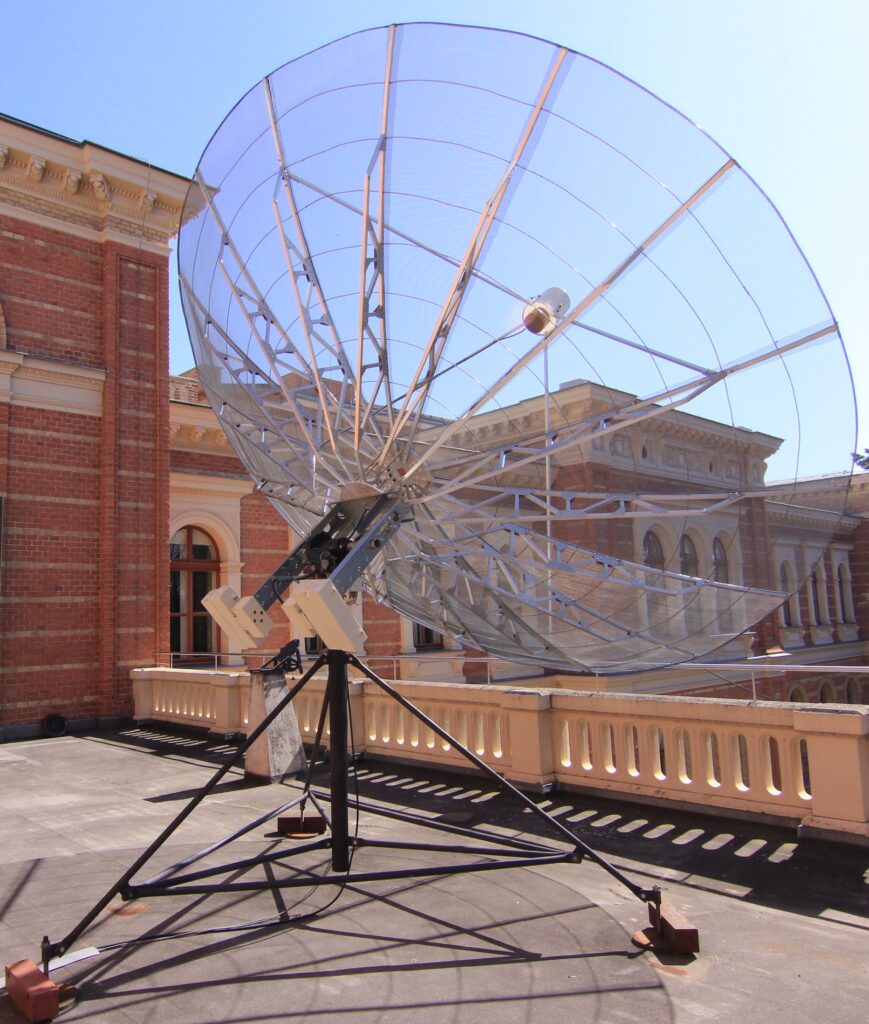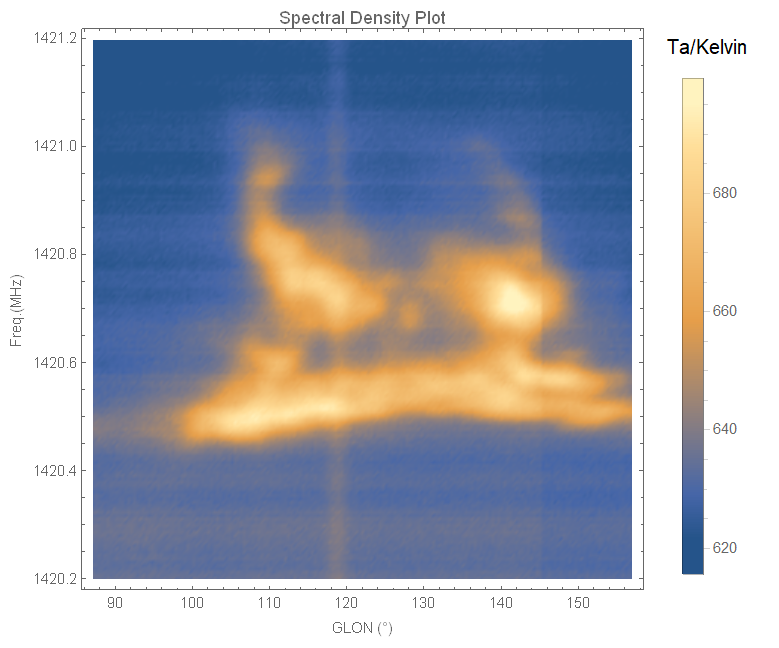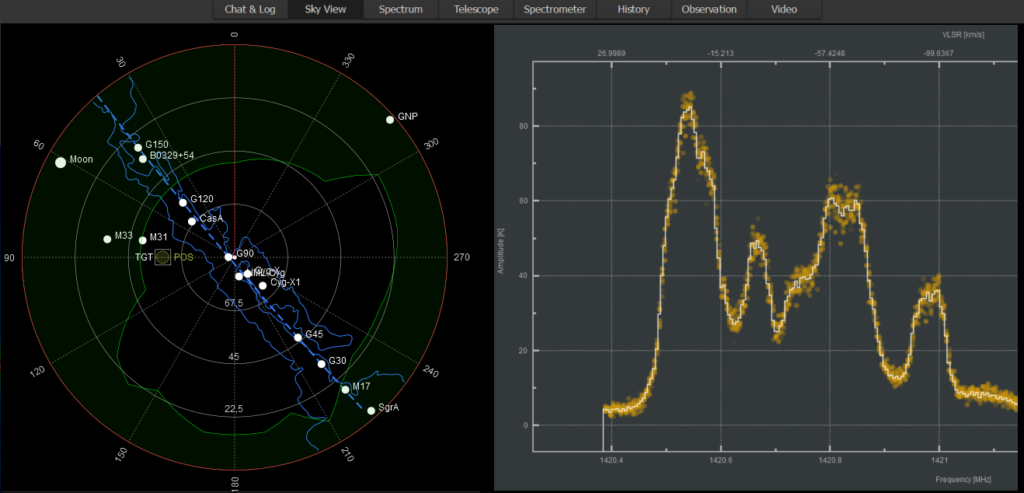

¹ but still small
The Department of Astrophysics operated a small radio telescope (SRT) with 2,3m dish size since 2005. In 2023 the dish size was updated to 4,5m. The new radio telescope allows observations of the 21cm line of neutral hydrogen, the observation of OH-maser emissions at 18cm and continuum emissions within that two frequency bands. Installed on the institutes western terrace, it is used primarily by students during practical courses.
First Light of the NRT

On the 5th of September 2023 the first successful observation was started at 20h00 local time, recording a transit of the Milky Way Galaxy between galactic longitudes 87° and 157°. A total of 4585 spectra each containing 326 data points in the frequency range from 1420,2MHz to 1421,2MHz were recorded in 12 hours and 30 minutes.
Radio Telescope Control Software

The software is completely open source and may be used by everyone for free. It not only allows you to control the radio telescope over the internet, it also provides a simulator plugin to conduct observations without any connection to a real telescope.
Windows Installer
Source Package Snapshot
Building and Installation Instructions for OSX
Simulator Data Package

The simulator uses data from the HI survey from the Max Planck institute for radioastronomy. It contains the northern and southern hemisphere in a spectral range of +-400km/s around the hydrogen line.
NOTE: Please extract file before use. On Windows, the data must be placed in the base installation directory (usually C:\Program Files\radtel), NOT in the bin/ subdirectory! On Linux/OSX the data must be placed in the directory the server/simulator is executed from, e.g. your home directory.
Documentation
Control Software for Small Radio Telescopes (English)
Installations- und Bedienungsanleitung (Deutsch)
Hardware Overview (English)
Electromagnetic Interference in Radio Astronomy (English)
Current Solar Radio Flux Data
This data is a mirror of the site https://services.swpc.noaa.gov/text/current-space-weather-indices.txt
It allows you to calibrate the radio telescope using the sun as a reference.
7 Day Solar Flux History
ftp://ftp.swpc.noaa.gov/pub/lists/radio/7day_rad.txt
 Department of Astrophysics
Department of Astrophysics